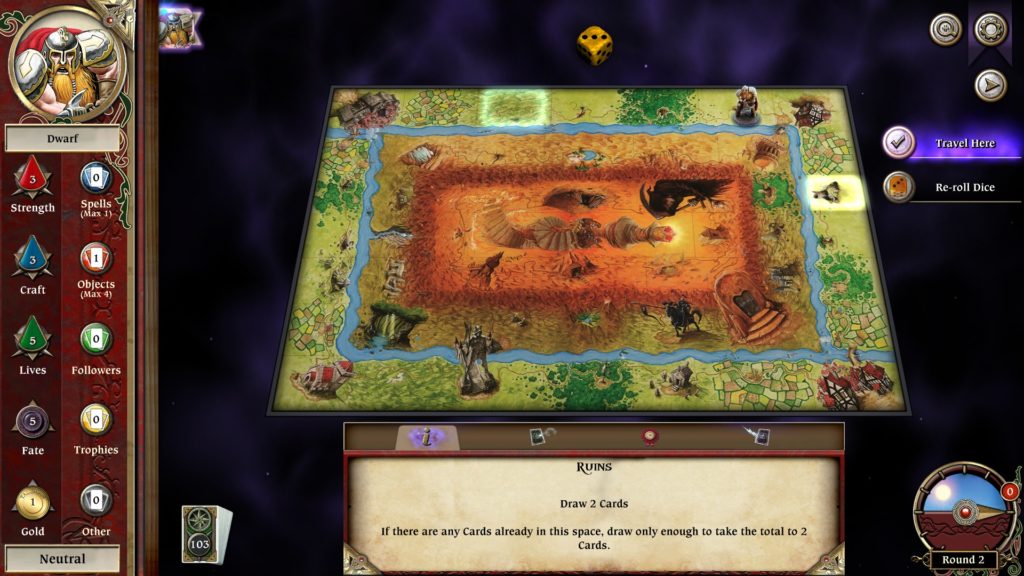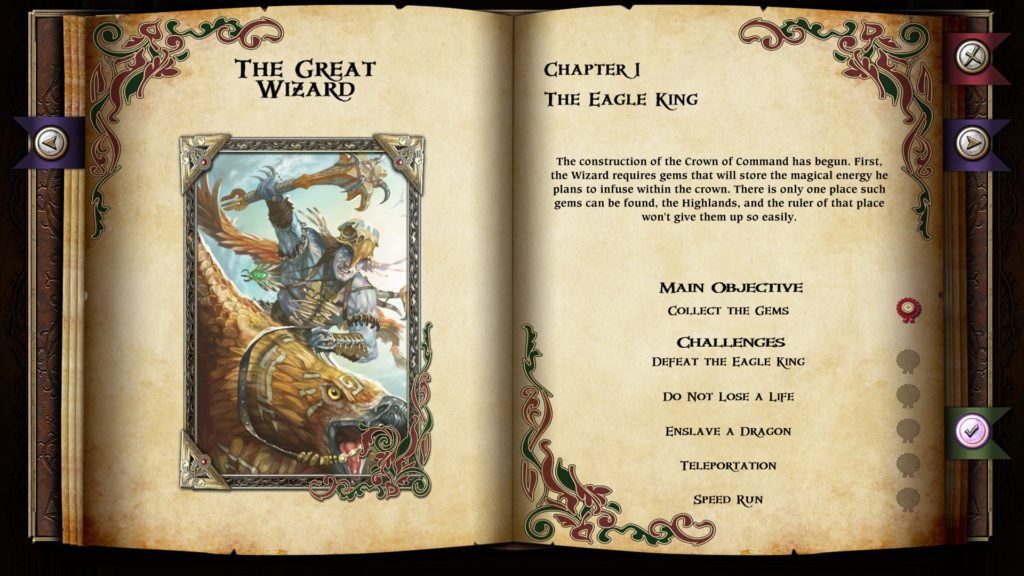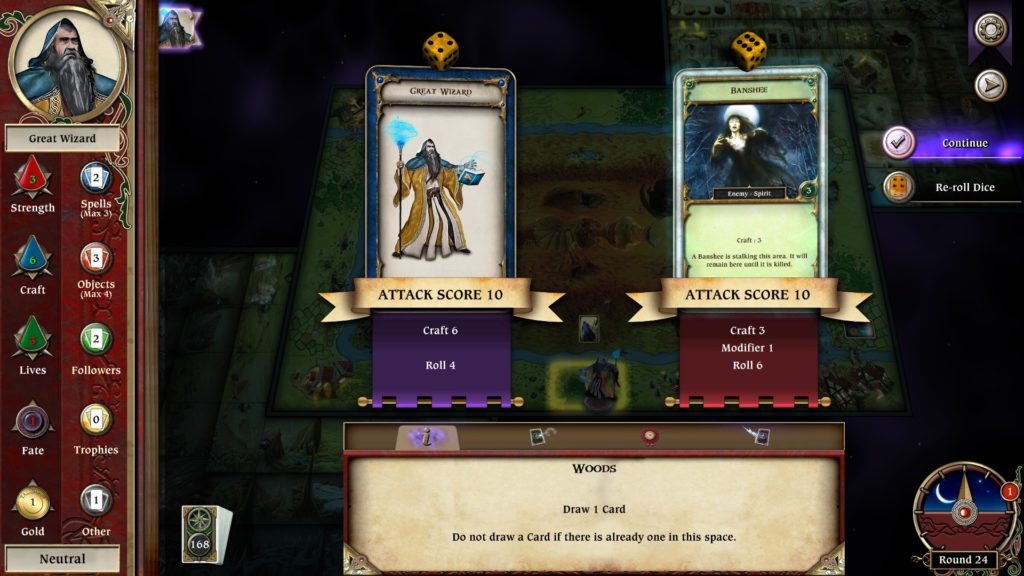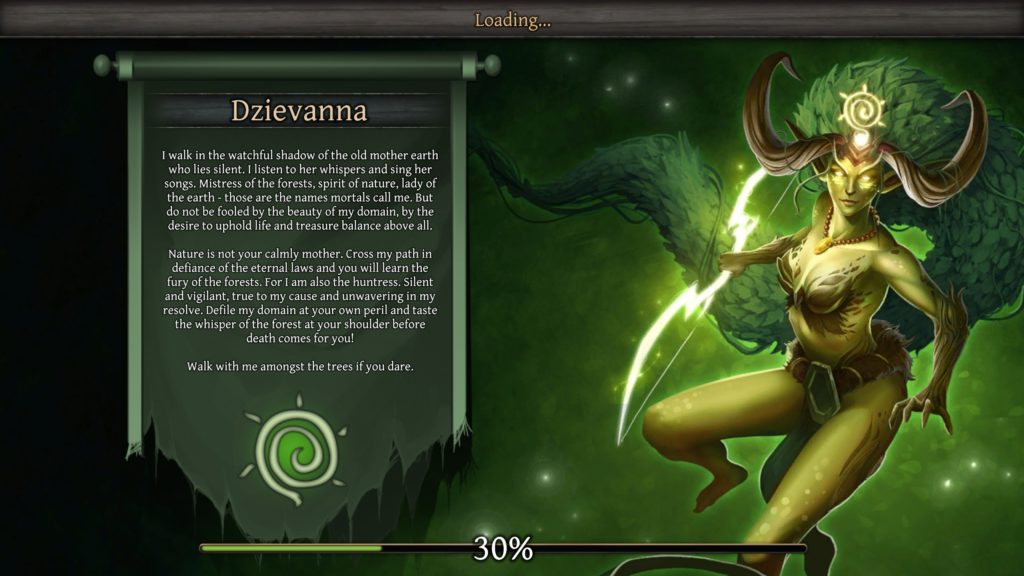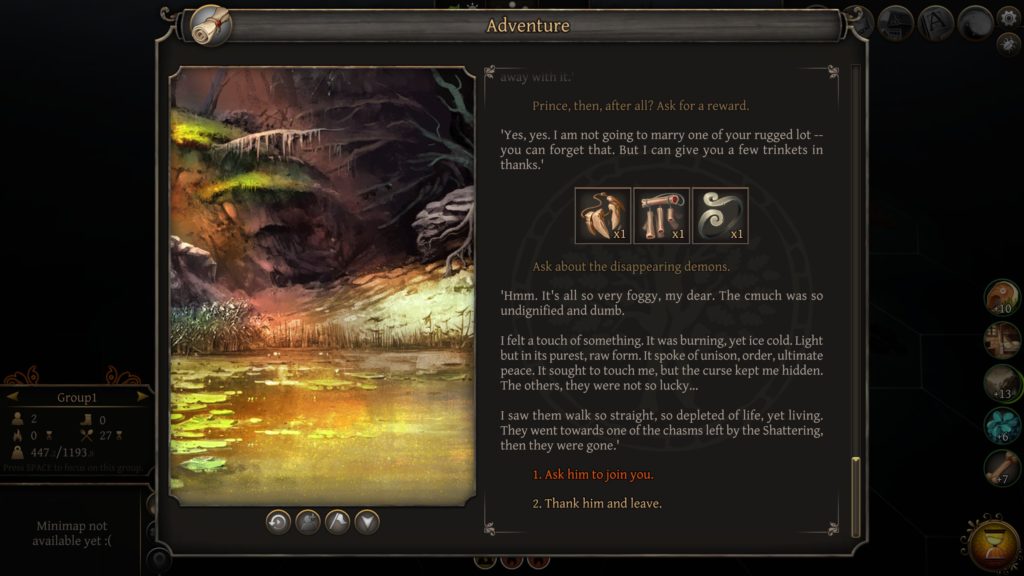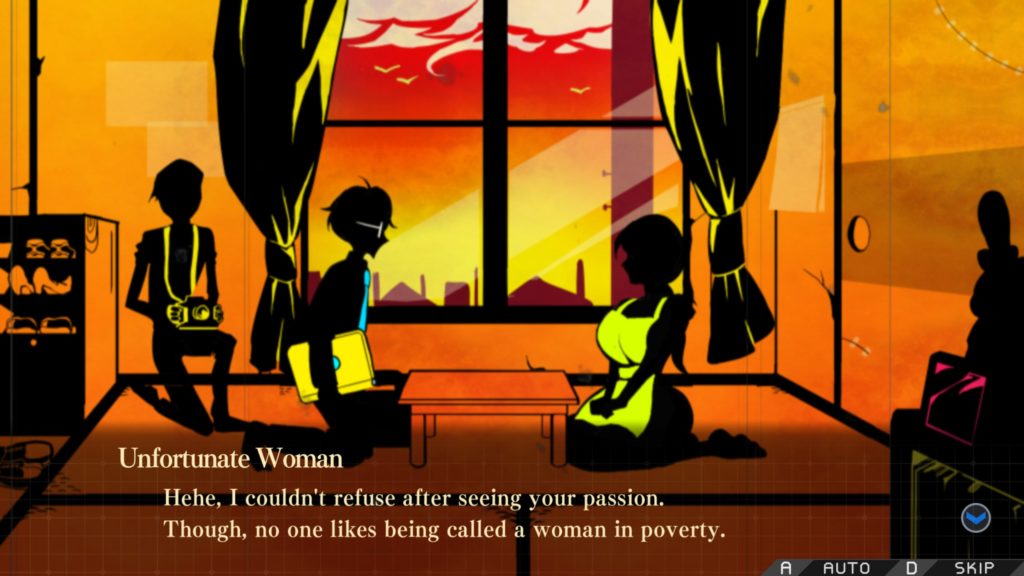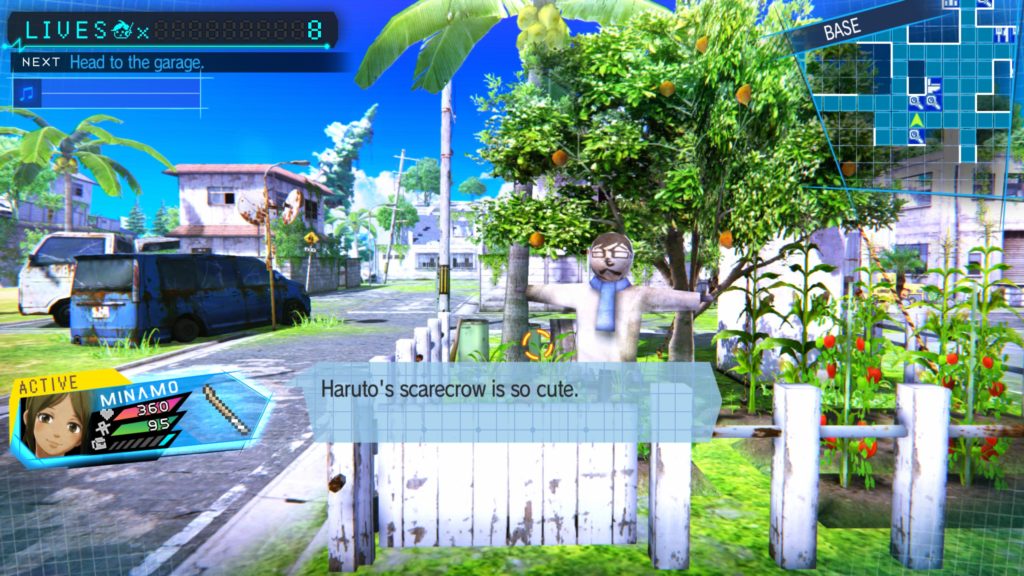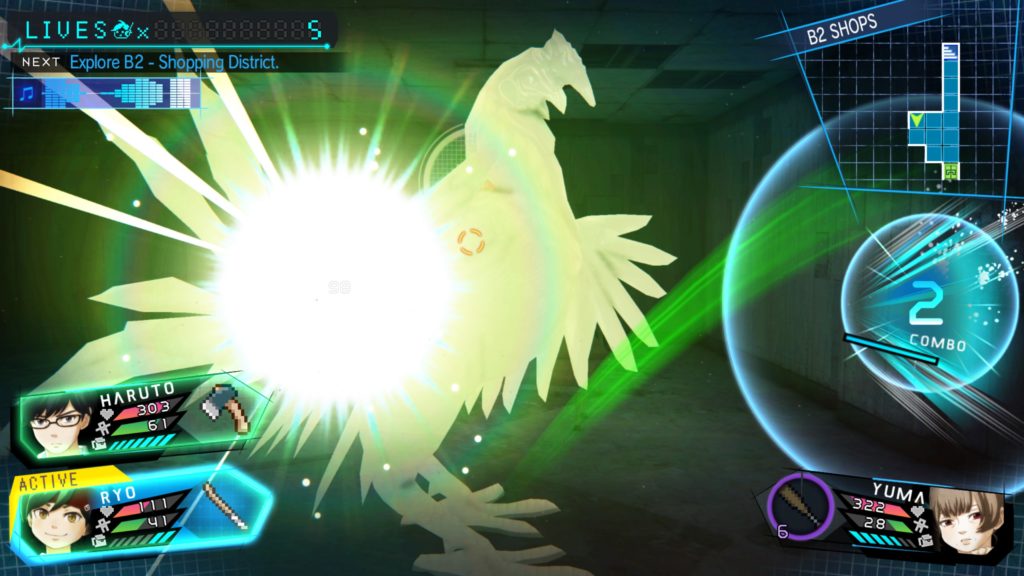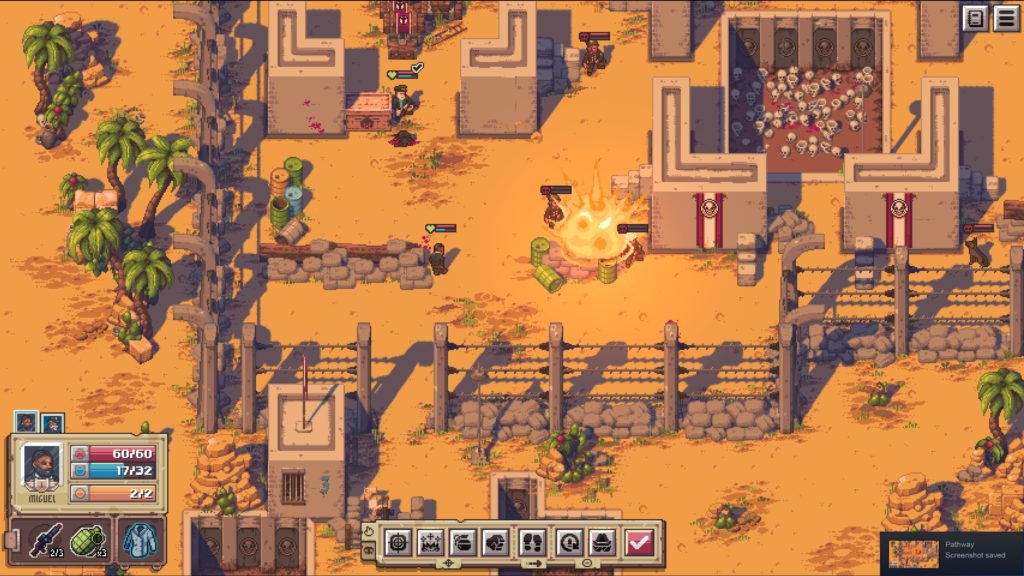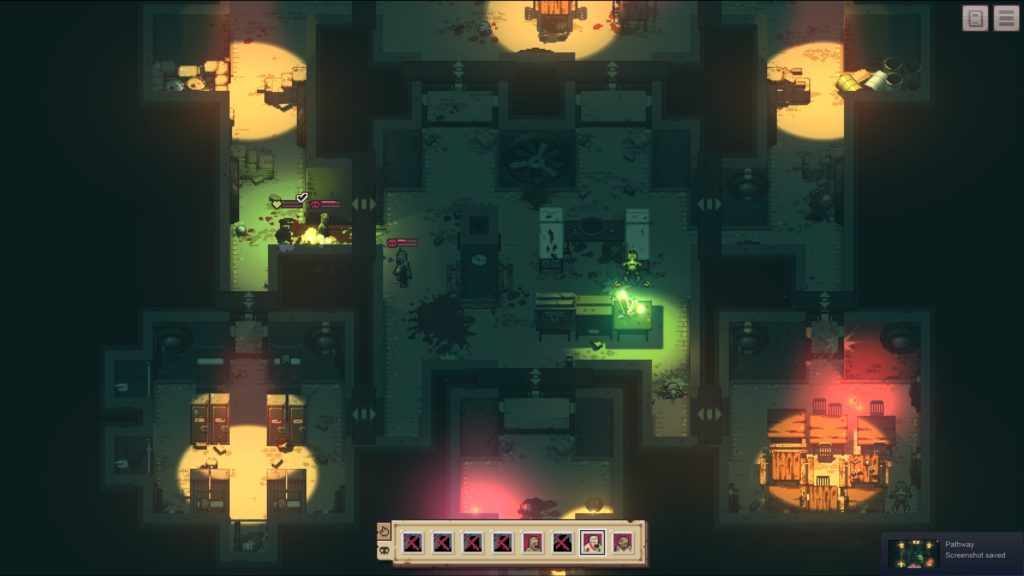Fission Superstar X (Review)

Source: Review Copy
Price: £11.39 (£2.09 soundtrack)
Where to Get It: Steam
Ahhh, Space. There’s so much more room for plotting and cackling there. Also dogfights and heavy capital ship whaling, which… Is where Fission Superstar X comes in. With a distinct Death Road to Canada vibe, Fission Superstar X is the tale of Doctor Leopold Merkin, and his attempts to make a super-nuclear bomb… A superstar. Her name is Celine Fission, and you will enjoy her concert, fools…
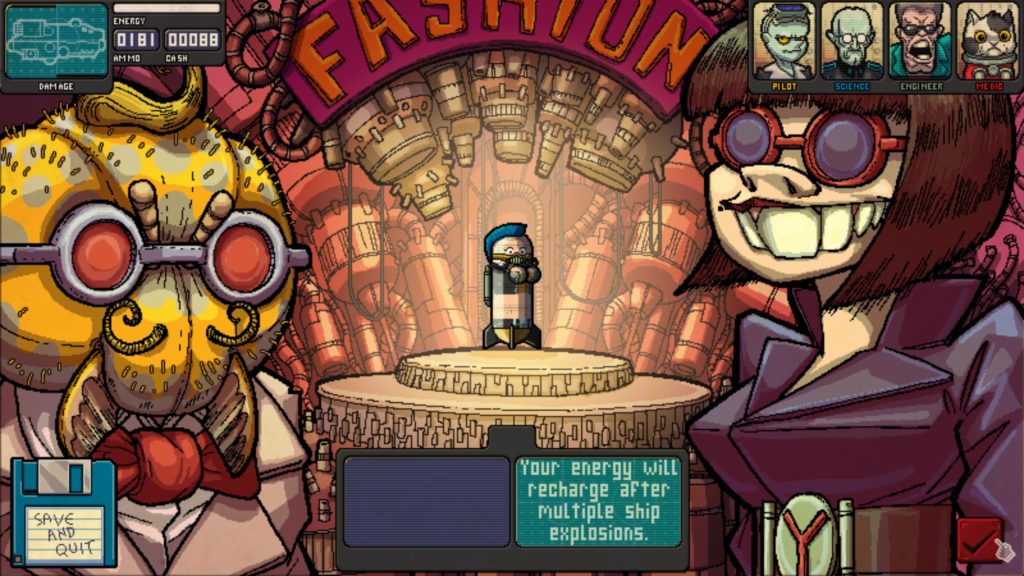
Describing how this roguelike shmup works can seem a little fusterclucky, but it’s really quite simple: You have four potential crew slots, up to two of which are filled at the beginning (For a while, it will just be your Clone Pilot and Clone Scientist, but options open up the more you play.) Each one mans a single turret quadrant (From Pilot, top, to Engineer, rear), and enemies will come at you from varying directions. Kill them before they kill you, and you’ll get a chance to train up your folks or heal in some fashion, then pick where to go next, including Recruitment (potentially better crew), Shipyards (potentially better ship stats, definitely some repairs), and special event locations of varying evil (From the relatively nice Medicaid Drones, to Comet Tails which blow you the heck about, to the Ion Storm or Minefield, which might as well be marked with “HERE BE ALMOST CERTAIN DEATH.”) You pick up money and ammo from destroyed ships where you can, and, once you beat a planet’s boss (From Pluto all the way to…???), you can choose to blow up the bomb early, earning you a new ship (and a shot of Doctor Merkin angrily wondering how it went wrong.)
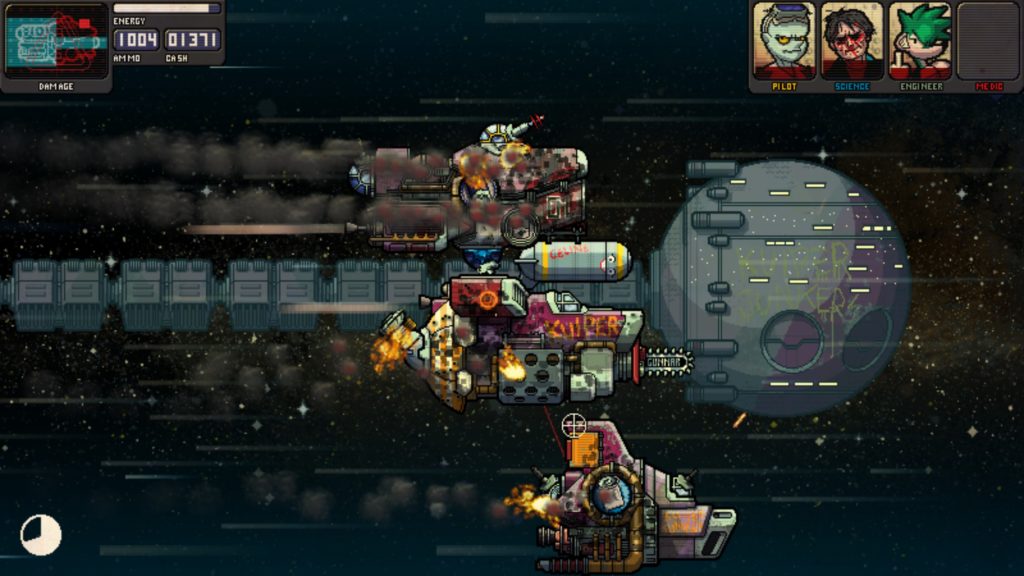
And them’s the basics, although there’s a lot more to it than that. Armoured ships, whose only weak point is the cockpit. Minibosses, including the Doctor Leopold Police Task Force. Those terrifying saw-ships, whose only purpose is to ram into you and murder murder murder. And, of course, different weapon types. I could probably spend a long while just talking about the variety of things that can happen, and references, and joy at the pew-pew guns. So let’s just assume “It is packed full of things wot happen”, and move on.
Aesthetically, the game is pretty interesting. Cartoonish pixels, junk, gore every now and again, and a fair amount of male presenting nipples, the ships are both clear in their design, and also interesting in and of themselves. Heck, there’s visible representation of your own ship upgrades, always a nice touch, and the music is solid stuff, giving that space opera B-Movie vibe. The ships deliberately don’t control that hot until you upgrade the handling (seriously, in the case of the Big Yins), and it’s all, honestly, very fitting for what it’s aiming for (The feel of a gigantic space bomber lurching its way through space.) The difficulty progression is mostly fair (Although those sawship enemies fill me with terror the moment they’re on screen, regardless of my or my crew’s armour), and, in the case of nastier encounters, it does warn you.
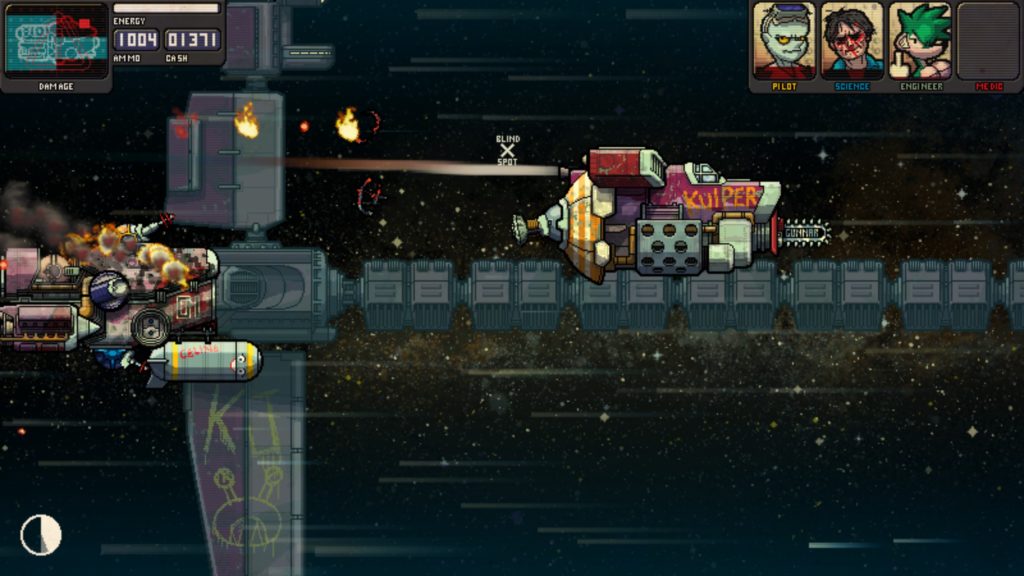
“Shut up and shoot this guy before he shoots you. Or we do…”
Feelwise, it’s meant to feel like a hectic chase across the Solar System, hounded by everyone and their dog, with you the villain, and… Yep, it nails that feel. The speed of even the slowest ships is shown in the starfield, and the feeling of trying to slide past a small battleship while it’s peppering you with missiles, wave beams, and whatever whatnots it’s throwing at you (probably while other things are also shooting at you) invokes just as much adrenaline based swearing as you’d imagine, and it’s a nice touch that you know how long the level’s going to last, as well as how much closer it gets you toward its goal.
So, overall, it does really well. What does it not do so well? Window customisation and the fact that individual runs are long. That last one’s more a taste thing than anything else (It isn’t a lunch break game, it’s something you play of an evening when you want to… Hrm, destress probably isn’t the right word… Play, I guess.) Still, overall, I like its feel, I like its guns, I like its heft… Fission Superstar X gets a vaudevillainous thumbs up, one Mad Scientist to another.
The Mad Welshman doesn’t have too much to add to this. He’s still working on writing his name on the moon. Best demonstration of ownership, writing your name on the moon with a giant laser…


